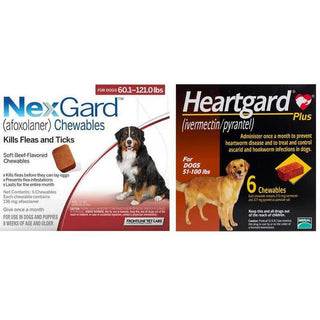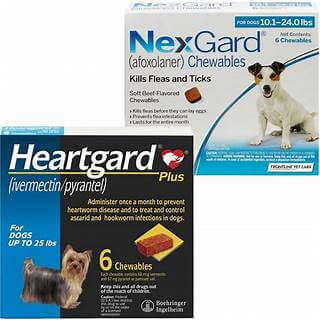
Several elements can impact your dog's daily water consumption, including weather, exercise, diet, and underlying health conditions.
Excessive thirst, medically termed polydipsia, often goes unnoticed. Knowing your dog's usual water intake is crucial for detecting significant changes. Increased water consumption can indicate a health issue, and early diagnosis often simplifies and makes treatment less invasive.
Discover the reasons behind your dog's increased water intake and the appropriate actions.
Daily Water Intake Recommendations For Dogs
A general guideline for a dog's water intake is about 1 ounce per pound of body weight daily. For example, a 10-pound dog should drink approximately 10 ounces of water daily.
Puppies, highly active dogs, nursing dogs, and those in warm climates usually require more water than this guideline. Dogs consuming canned food, which contains water, may drink less.
Regardless of your dog's daily water intake, only restrict its access to water if instructed by a veterinarian. Always ensure your dog has access to water, even overnight, or if it seems to be drinking excessively and needs frequent bathroom breaks. Depriving your dog of water can lead to dehydration, electrolyte imbalances, and potentially kidney issues.
How To Track Your Dog's Daily Water Intake
To track your dog's water consumption, fill their bowl to the same level at the same time each day. For accuracy, measure the amount of water added in the morning and how much remains at the end of the day.
Some bowls have measurement markings on the side, though these might not be effective if the bowl is prone to spills or being knocked over by other pets or young children.
If you have multiple pets with microchips, consider using bowls that open only for specific microchips to monitor each dog's intake individually.
If you notice your dog drinking much more water than usual or urinating more frequently, it's time to schedule a visit to the veterinarian.
Why Is My Dog Drinking So Much Water?
Several elements influence your dog's daily water intake, including environmental conditions, activity level, diet, and health status. Here are some potential causes of increased water consumption:
Diet
- Canned Food Diet: Dogs eating canned food may drink less water because canned food has a higher water content than dry food.
Age
- Puppies require more water due to their developing kidneys and higher activity levels.
- Senior Dogs: May drink more or less water due to cognitive decline or medical conditions.
Medications
- Certain medications, such as diuretics (furosemide, torsemide), anti-seizure drugs (phenobarbital), and corticosteroids (prednisone), can increase thirst and urination.
Environment
- Hot Climates: Dogs in warmer areas may need more water to stay hydrated.
- Frequent Exercise: Active dogs require more water to compensate for fluid loss.
Health Conditions
- Electrolyte Imbalances: Sodium and potassium imbalances can increase thirst. Watch for signs like vomiting, diarrhea, lethargy, and neurological issues, and consult a vet if these occur.
- Dehydration: Caused by heat, exercise, or illness. Symptoms include lethargy, tacky gums, excessive panting, and skin tenting. Severe dehydration requires immediate veterinary care.
- Diarrhea Or Vomiting: This can cause dehydration, leading to increased water consumption. Ongoing symptoms necessitate veterinary attention.
- Hyperthermia or Fever: High body temperature from various causes can increase thirst. Contact your vet if your dog is panting excessively or seems lethargic.
- Kidney Failure: A progressive condition where the kidneys fail to filter waste, leading to increased urination and thirst. Treatment varies based on severity.
- Diabetes Mellitus: Elevated blood sugar levels lead to increased urination and thirst. Symptoms include lethargy, decreased appetite, and abnormal breath odor. Immediate veterinary care is necessary.
- Diabetes Insipidus: A rare condition causing excessive thirst and urination. Veterinary evaluation is needed to distinguish it from other conditions.
- Cushing's Disease: Overproduction of cortisol leads to increased thirst and urination, along with other symptoms like a pot-belly appearance and hair loss.
- Pyometra: A life-threatening uterine infection in unspayed female dogs, leading to increased urination and thirst. Symptoms include pus discharge, fever, and lethargy. Immediate veterinary treatment is critical.
- Liver Infection: Bacterial infections like Leptospirosis increase urine production and thirst. Vaccination can prevent this, and timely veterinary care is crucial for suspected infection.
Noticing changes in your dog's water intake and understanding the possible causes can help maintain their health and well-being. If you observe significant changes in your dog's drinking habits, promptly consult your veterinarian.
Why Is My Dog Drinking Water And Then Throwing Up?
Dogs often drink more water when they have an upset stomach. This behavior might be an attempt to relieve discomfort or to induce vomiting, though the exact reason is unclear.
Increased water consumption can be associated with various medical issues, such as:
- Gastroenteritis: Mild inflammation of the gastrointestinal tract.
- Pancreatitis: Inflammation of the pancreas.
- Inflammatory Bowel Disease: Persistent inflammation of the digestive tract.
- Foreign Body Obstruction: Ingestion of objects that block the digestive tract.
- Cancers: Certain types of cancer affect the gastrointestinal system.
Why Is My Dog Drinking A Lot Of Water And Licking Its Paws?
The combination of these symptoms can result from dehydration, allergies, pain, or behavioral issues such as anxiety, stress, or cognitive dysfunction (similar to dementia in humans).
Why Is My Dog Drinking Excessively And Urinating Frequently?
When dogs drink a lot of water, they tend to urinate frequently. This happens because the kidneys process the high volume of water intake, resulting in increased urine production. Several medical conditions can lead to increased thirst and water consumption, including kidney disease, diabetes, and Cushing's disease.
Why Is My Dog Drinking A Lot of Water At Night?
Excessive nighttime water drinking in dogs can be linked to various medical conditions, such as dehydration, cognitive dysfunction, high-sodium treats or food, or a lack of water during the day, especially if created without access to water. Additionally, dry air from heating can increase their thirst, so using a humidifier may help. Boredom, anxiety, or stress can also lead to increased drinking; ensuring your dog receives ample affection and playtime can mitigate this behavior.
When To See The Vet For Excessive Thirst In Dogs
Determining when to consult a veterinarian for your dog's excessive thirst can be challenging. However, if any of the following symptoms accompanies excessive thirst, immediate evaluation is crucial:
- Vomiting
- Diarrhea
- Lethargy
- Decreased appetite
- Severe panting
- Respiratory distress
- Ataxia or weakness
- Collapse
- Blood in the urine
- Straining to urinate
- General malaise
If your regular veterinarian is unavailable, visit an emergency veterinary hospital. The emergency team will conduct a physical examination and perform diagnostic tests to find out the cause.
If your dog is otherwise healthy, eating well, and alert, you can schedule an appointment with your veterinarian at their next available time, even if it's a few weeks away.
Diagnoses Of Excessive Thirst In Dogs
To find out the cause of your dog's excessive thirst, your veterinarian will start by gathering a thorough history of your dog's water intake and any unusual behavior. Then, they will perform a full physical examination.
To identify potential medical issues, your vet may recommend several diagnostic tests, including:
- Full Bloodwork: Evaluates kidney enzymes, liver enzymes, blood sugar levels, red and white blood cell counts, and electrolytes.
- Urinalysis: Assesses the kidneys' concentrating ability and checks for protein, white blood cells, blood, crystals, and bacteria in the urine.
- Urine Culture and Sensitivity: Identifies bacterial growth in the urine and determines the most effective antibiotic treatment.
- Abdominal X-rays: Detects bladder or urethral stones, tumors, uterine infections, and prostate enlargement or mineralization.
- Abdominal Ultrasound: Examines internal organs for abnormalities.
- ACTH Stimulation Test: Used to diagnose Cushing's disease.
Treatment Options For Dogs That Drink A Lot Of Water
The treatment for a dog drinking excessively depends on the underlying cause:
- Dehydration: Treatment varies by severity. Mild cases may be managed by providing fresh water frequently. Moderate to severe cases may require subcutaneous or intravenous fluid therapy administered by a veterinarian.
- Vomiting/Diarrhea: Addressing the underlying cause is key. Treatments often include antiemetic (anti-nausea and anti-vomiting) medications, anti-diarrheal drugs, dietary changes, and fluid therapy.
- Hyperthermia/Fever: Treatment depends on the cause of the elevated body temperature. Cooling measures and intravenous fluids are common for hyperthermia. Fevers may also require antibiotic therapy and additional fluids.
- Kidney Failure: Treatment varies based on the stage of renal failure and can range from administering fluids at home to hospitalization for intravenous fluid therapy. Other treatments may include low-phosphorus diets, appetite stimulants, gastroprotective medications, blood pressure medication, and possibly antibiotics.
- Medication Side Effects: Medication side effects usually resolve within 1-2 weeks as the body adapts. If excessive urination occurs, veterinarians may adjust the dosage to prevent accidents.
- Diabetes Mellitus: Insulin therapy is crucial for managing diabetes mellitus. The veterinarian will determine the insulin type and dosage, which may need frequent adjustments initially. Severe cases may require hospitalization if diabetic ketoacidosis develops.
- Diabetes Insipidus: Treatment depends on whether it is central (CDI) or nephrogenic (NDI). CDI is treated with the synthetic hormone desmopressin (DDAVP). NDI is managed with hydrochlorothiazide and a low-sodium diet.
- Cushing's Disease: This condition is usually treated with trilostane, a medication that reduces excessive cortisol production.
- Pyometra: The primary treatment is surgical removal of the infected uterus (ovariohysterectomy). Antibiotics may be used for open, draining infections, but surgery is often necessary to prevent recurrence.
- Leptospirosis Infection: Hospitalization is typically required, and treatment involves intravenous antibiotics, fluid therapy, and gastroprotectants. Early diagnosis and treatment significantly enhance the chances of a full recovery.
- Electrolyte Imbalances: Treatment depends on the specific imbalance and its cause. It can range from hospitalization and fluid therapy to simple dietary changes and avoiding high-sodium treats.






